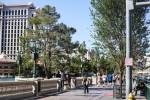Make your Christmas tree a little ‘greener’
For the first 20-something years of my life, real Christmas trees were the only option I ever knew. And frankly, artificial trees were so depressingly plastic-looking back then, I'm glad it was never an issue in my house.
I continued with real trees for the next 10 years of my adult life. Then something happened. We bought a house that had a very tall ceiling and screamed for a tree that was nearly as tall. But after one year of spending nearly $200 on a 12-foot real tree, I knew something had to change.
It didn't take a math wizard to understand how quickly one can go broke paying for $200 trees each year when today's fake trees look so realistic. Besides, now they come prelit, assemble in three easy pieces and store in a sturdy cardboard box. Within two years, they pay for themselves and on top of that, just think of all the trees I would save over the years.
We did our shopping, found an artificial tree we liked and made the investment. I felt pretty good about knowing I would never have to buy another "throw-away"' tree again and I would be doing something good for the environment, too.
Then came a move to North Carolina and with it, a house with no ceiling taller than 9 feet. That first December, we were back to square one. Now living near the land of Christmas tree farms galore, what do we do this time?
Actually the decision was easy. Over the previous year, I had researched a lot about various aspects of living a more eco-friendly life as I collected research for my upcoming book. Everything I thought I was doing right for the environment in defense of buying an artificial tree went out the window. Here are a few of the reasons, as noted in a recent conversation I had with Rick Dungey, public relations manager for the National Christmas Tree Association.
* Artificial trees never biodegrade. One of the most common reasons for buying an artificial tree is their longevity. Although artificial trees can last for years, eventually they are discarded where they remain in a landfill forever more. Fake trees are nonbiodegradable so they never break down.
* Real trees are good for the garden. After the season, real trees can be hauled to the backyard as a minihabitat or they can be ground and used as valuable mulch to retain moisture and improve soil conditions. But in all cases, they are 100 percent biodegradable.
* Artificial trees include potentially harmful material. Part of what makes artificial trees so sturdy are the components used in their construction. PVC plastics are made from petroleum byproducts, heavy metals are used to stabilize the plastics and the metal branches are mined from the earth. In California, warning labels are even required on artificial trees to alert users of the potential risk of hazardous materials -- including lead.
* Real trees are good for the environment. In 2008, 45 million new Christmas trees were planted in tree farms across America. At any moment, there are approximately half a billion trees growing for future harvest that otherwise would not be there. While growing, they're absorbing carbon dioxide and releasing oxygen, stabilizing soil and providing habitats for wildlife. As trees are harvested, new trees are planted to take their places. And unlike artificial trees, real trees can often be purchased from local farms.
* Artificial trees are imported thousands of miles. Buying local and supporting area businesses doesn't apply to artificial trees. Most are made in China, shipped across the Pacific and then travel many more miles to reach their final destinations.
Now, having pretty much bashed the argument in favor of artificial trees as better for the environment, I certainly recognize there are circumstances where they are more appropriate for certain users. Sometimes an artificial tree is the only chance at having any representation of the real thing and I appreciate and respect that. However, when the opportunity presents itself for those who do have an option, think twice before opting for artificial Christmas trees as the greener option, because they're not.
Joe Lamp'l, host of "Fresh From the Garden" on the DIY Network and "GardenSMART" on PBS, is a master gardener and author. For more information visit www.joegardener.com and www.DIYnetwork.com.























